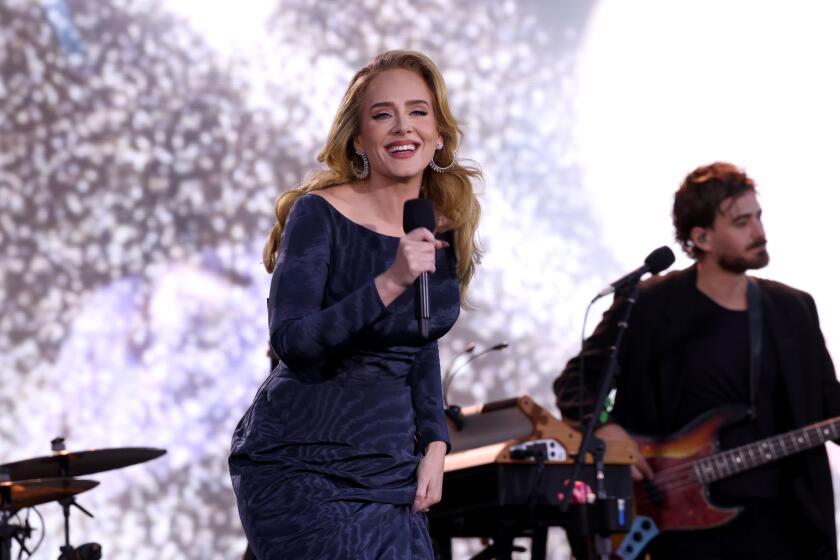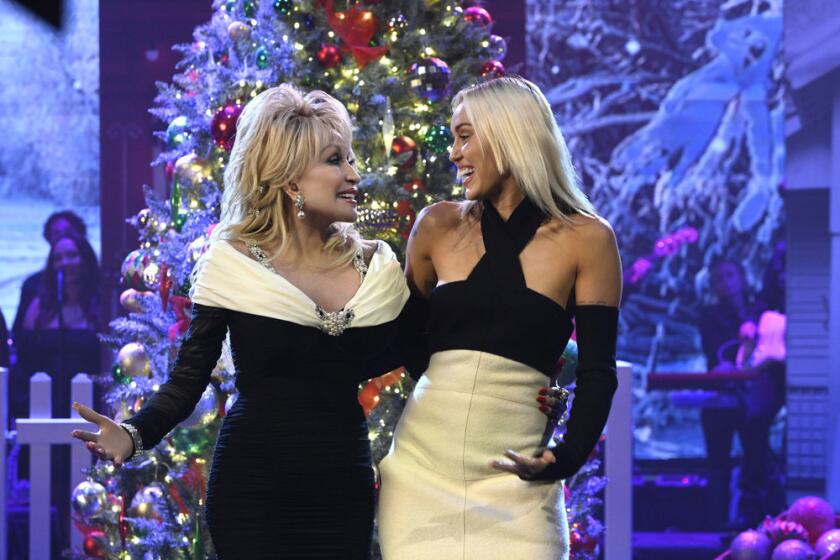POP MUSIC REVIEW : The Right (Same) Stuff : Rock: The Church is a polished group, but after 10 years of performing, it has not remade itself artistically and manages to paint only in a few darkly glistening hues.
SAN JUAN CAPISTRANO — It is hard to imagine the Church giving a better account of itself than it did Thursday night at the Coach House in a set that was glistening, brooding, forceful and extremely well-played. But when the nearly two-hour show was over, one had to wonder how a band could develop for 10 years and cover so little ground.
Like U2 and R.E.M., the Church spent the 1980s refining a musical personality that was distinctive, but narrow. The Australian band’s small parcel of sonic and emotional space combines U2’s urgent belfry chime and R.E.M.’s dreamy web of murmuring voices and guitars.
Bassist Steve Kilbey sang with muted, yet convincing emotion in a voice full of tasteful reserve. Guitarists Peter Koppes and Marty Willson-Piper played glancing, finely etched parts that often used distortion effects and echo to evoke an encompassing rush of wind.
Kilbey’s bass-thrum and the solid, active drumming of Jay Dee Daugherty (the former Patti Smith Group member and Tom Verlaine sideman is touring as a substitute for longtime Church regular Richard Ploog) ensured that the band’s most gauze-like textures always rested on a firm, rock pulse.
As far as it went, that approach was fine. But instead of the versatility and striking contrasts that mark the work of the best rockers of the ‘60s and ‘70s, the Church could vary its basic ritual only by subtle shadings and small gradations. Within a few years of their debuts, performers like Bob Dylan, the Beatles and Van Morrison remade themselves many times over artistically, setting an expansive pattern followed by the best rockers of the ‘60s and ‘70s. The past decade in rock has been beset by single-minded specialization.
It may be more than coincidence that Kilbey’s outlook as a lyricist tends to be exceedingly bleak, frequently depicting a diminished world of stark limits. These are important themes, of course, and the Church often gave them expression that conveyed barrenness without dull droning.
“Under the Milky Way,” the band’s breakthrough hit from 1988, vividly captured the chill of feeling like a small speck amid the vast, impersonal beauty of creation. “Destination” was the picture of dejection (the idea is that civilization has no meaningful destination), with Kilbey’s usually subdued voice rising in a display of deep anguish. “Grind,” the high point of the Church’s current “Gold Afternoon Fix” album, was a foreboding, hard-edged song portraying a century staggering to an end like a punch-drunk prizefighter. Let’s hope things turn out otherwise, but “Grind” could be one of the signature songs of the ‘90s.
But with little in the way of folk, country or blues sources, with lyrics skewed toward symbol and away from story lines and characterizations, with no humor in the songs (although Kilbey displayed a droll wit in his between-numbers chit-chat), and with the arrangements almost all featuring that wind-tunnel of guitars, the Church could only paint in a few darkly glistening hues.
The show offered one nice surprise, a version of Patti Smith’s “Dancing Barefoot” that proved a good candidate for the Church’s suitably mysterious, wind-swept treatment, and one downer, a final encore that devolved into a 15-minute jam with little point.
Rock bands today can enjoy some commercial success, as the Church does, by doing one or two things well. But that is a small-potatoes approach, given the broad range of expressive possibilities in rock.
The Blue Aeroplanes certainly keep a fruitful ‘60s example in mind. At times, the British band’s 50-minute opening set sounded like a tribute to the Velvet Underground. But the performance had enough zest and quirky immediacy to rise above rehash. Singer (the term is loosely applied) Gerard Langley was more of a poet-actor who delivered abstract lines about romantic obsessions with theatrical acuity. Not only did Langley look like a younger version of Velvets alumnus John Cale with his short hair and shades, but his partly sung, mostly spoken approach echoed one of Cale’s favorite dramatic vocal devices.
While Langley acted out the lyrics, a dancer named Wojtek Dmochowski tilted and jerked to the rhythms like a Deadhead on fast-forward. It added color, if not grace, to the proceedings. Dmochowski was an ungainly Everyman who, standing in for the audience as a whole, let himself be overtaken by insistent music. A trio of guitarists was led by Angelo Bruschini, an expert at dabbing on a wide array of pointed, detailed textures with his hollow-bodied electric. Together, Bruschini, fellow lead guitarist Alex Lee and Rodney Allen recalled the deft interlocking and dynamic ebbs and surges of the Feelies, another band of worthy heirs to the Velvets’ style.
More to Read
The biggest entertainment stories
Get our big stories about Hollywood, film, television, music, arts, culture and more right in your inbox as soon as they publish.
You may occasionally receive promotional content from the Los Angeles Times.











